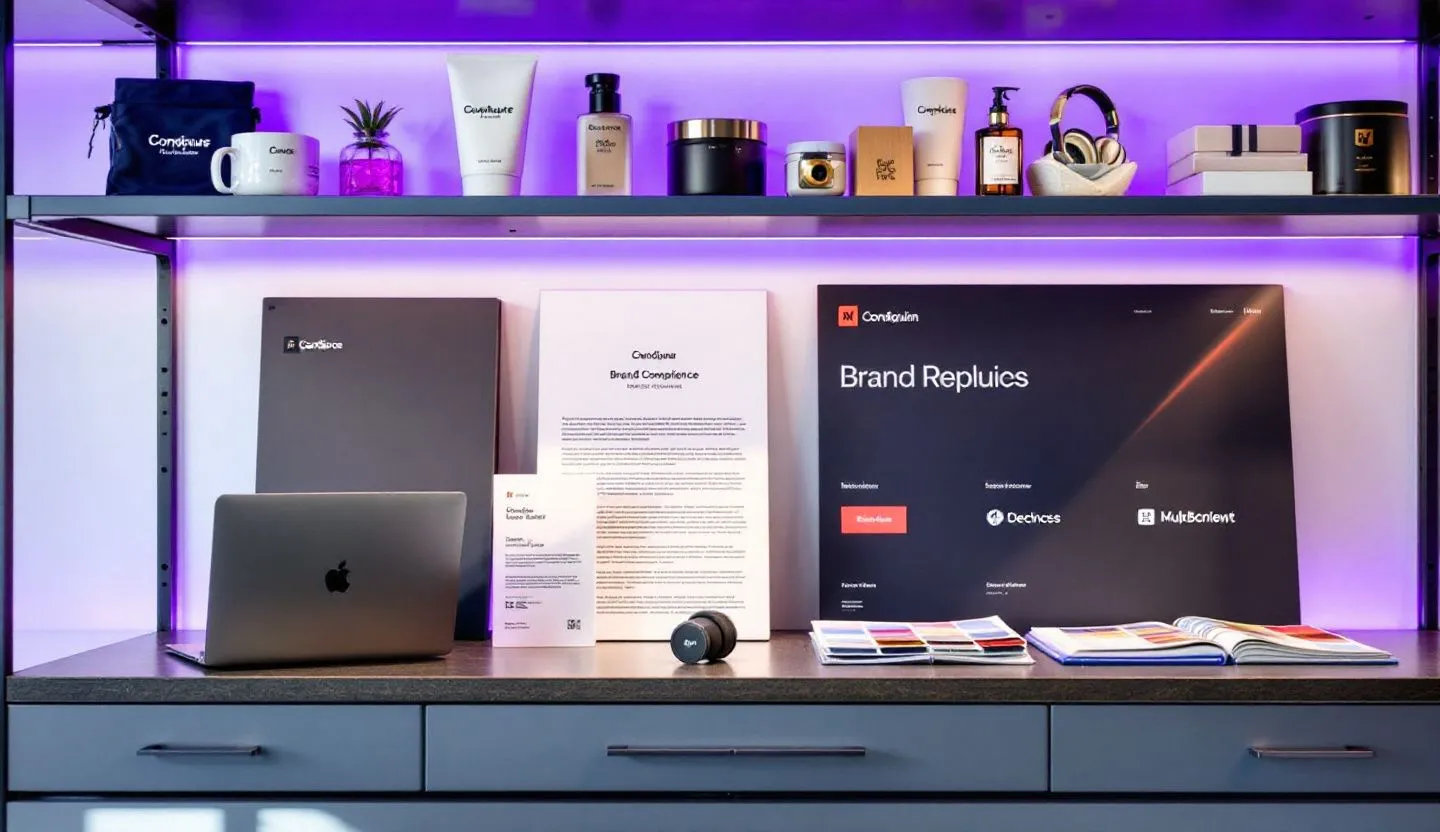I’ve worked in enough enterprise marketing teams to know the pattern: you invest in a beautiful, robust brand portal. The guidelines are crisp, the assets are always up to date, and the brand story is clear. But then, when the rubber meets the road, teams still end up pulling logos from old email threads or color codes from outdated PDFs. Why? Because the portal becomes a place you visit for reference, not the engine that powers your marketing workflow.
The real pain isn’t creating a brand portal. It’s integrating that portal into the places your teams actually work,in design tools, campaign platforms, partner portals, and even compliance systems. If you’ve ever watched a designer re-download the same logo for the third time in a week, or fielded a frantic Slack message about the “latest” brand color, you know exactly what I mean. This isn’t just inefficient. It’s where brand consistency and speed-to-market quietly erode.
Why the old way holds us back
I remember when the “brand portal” was a shared folder on the intranet. Later, we upgraded to cloud-based libraries and finally to dedicated brand management platforms. But even with these leaps, the same challenges lingered.
The core issue: brand assets and guidelines live in one place, while the work happens somewhere else. Designers live in Figma or Adobe. Marketers craft campaigns in HubSpot or Salesforce. Partners want quick self-serve access, and compliance teams need audit trails. Each group ends up building its own workarounds, which almost always means someone’s using an old asset or skipping the portal entirely.
This disconnect breeds real risk. A global CPG brand I worked with once discovered three versions of the same product logo circulating across EMEA markets, each with subtle color differences. Their teams had access to the portal, but the assets never flowed into the campaign tools or local partner hubs. The result: inconsistent shelf presence and expensive reprints. Multiply that across channels and regions, and you see why brand control feels like a constant game of whack-a-mole.
The shift: why integrated brand portals are now essential
A few things have changed. First, the pace of content creation is relentless. Global brands are producing hundreds of assets a week, across dozens of channels and languages. There’s no time for manual asset hunting or double-checking the latest guidelines. Second, the tools we use are more interconnected than ever. Your design, marketing, and legal teams are all using SaaS platforms that can, in theory, talk to each other.
But the biggest shift is in expectations. Brand consistency is now table stakes, not a nice-to-have. Regulators care. Customers notice. Partners expect it. And the C-suite wants to see that every campaign, asset, and touchpoint ladders up to a single, unified brand story,without slowing down the business.
What’s changed is not the need for a brand portal, but the need for that portal to integrate deeply with the rest of the marketing stack. In other words, your brand portal should be less like a museum and more like a living, breathing control center,one that feeds assets, guidelines, and guardrails into the daily flow of work.
The new reality: what brand portal integration actually means
Brand portal integration is more than just an SSO login or a link in your nav bar. It’s about weaving your brand assets, rules, and content directly into the tools and workflows your teams already use, so they don’t have to break stride to stay on brand.
Take this example from a global financial services firm I worked with last year. They rolled out a new brand portal, but adoption lagged. Designers still stored templates in personal drives, and marketers were emailing assets back and forth. The turning point? They integrated the brand portal with their Adobe Creative Cloud environment, so every time a designer opened Photoshop, the latest approved assets and color palettes were right there. They also synced the portal with their marketing automation platform, ensuring every campaign used the correct logo and disclaimers. Suddenly, compliance risk dropped, and the brand team stopped playing asset police.
Where integration delivers the most value
Integrating your brand portal with existing marketing and design tools isn’t just about convenience. It directly impacts speed, consistency, and compliance. Let’s break down where the biggest wins happen.
Consistent design execution at scale
For creative teams, the biggest challenge isn’t knowing the rules. It’s executing them, every single time, under tight deadlines. When your brand portal plugs directly into design tools like Figma, Adobe, or Canva, designers get instant access to the latest logos, colors, fonts, and templates,without breaking their creative flow.
This means less context-switching and zero asset hunting. A designer working on a social campaign in Figma can drag-and-drop the correct logo or approved photography straight from the brand portal. No more “Is this the right shade of blue?” or “Which lockup do we use for this region?” The result: creative output that’s both faster and always on brand.
Speed-to-market for marketers and partners
For marketers and partner managers, time is everything. Campaign windows are shrinking, and partners want to move fast. When your brand portal integrates with campaign tools like HubSpot, Salesforce, or Sprinklr, marketers can pull in approved assets and messaging without chasing down the brand team. Partners can self-serve the right templates and co-branding assets, reducing back-and-forth and the risk of off-brand executions.
A global software company I worked with uses their portal integration to power a partner resource hub. Partners can access co-branded templates, product imagery, and legal disclaimers,all synced from the brand portal. This has cut partner onboarding time in half and driven a measurable lift in campaign quality.
Compliance and audit readiness
For compliance officers and legal teams, the brand portal is often the source of truth for disclaimers, regulatory copy, and usage rights. But if those assets live in a silo, it’s nearly impossible to enforce compliance at scale. Integrating your brand portal with campaign management tools, digital asset management (DAM) systems, and even e-signature platforms ensures that every asset used externally has been vetted and logged.
This integration pays off during audits or regulatory reviews. Instead of scrambling to prove that a campaign used the correct disclaimer or imagery, you have a complete, automated audit trail. One healthcare brand I know even integrates their brand portal with their learning management system (LMS), so every employee and partner has to review and acknowledge the latest compliance guidelines before accessing new assets.
IT, security, and scalability
For IT and security teams, the proliferation of SaaS tools is both an opportunity and a headache. Brand portal integration reduces risk by ensuring that asset access is governed by the same identity and access management (IAM) controls as the rest of your stack. Single sign-on, user provisioning, and role-based permissions all flow through, reducing the risk of unauthorized access or data leaks.
At scale, integration also means you can automate asset updates, version control, and deprecation. When you update a logo or retire a campaign, the change propagates instantly to every connected tool. This is the difference between “We hope everyone uses the new assets” and “We know they are.”
The next-gen DAM for enterprise
Get more than just storage. Get the DAM that dramatically improves content velocity and brand compliance.How to approach brand portal integration in your organization
Integration isn’t a magic switch you flip. It’s a process that requires alignment across marketing, design, IT, compliance, and even legal. Here’s how to approach it in a way that sticks.
Map your existing marketing and design stack
Start by mapping where your teams actually work. List out all the tools in play: design (Figma, Adobe, Canva), campaign (HubSpot, Salesforce, Marketo), asset management (DAM, CMS), compliance (workflow tools, LMS), and partner portals. Identify the key touchpoints where brand assets and guidelines are used or needed.
This mapping exercise often surfaces hidden duplication or rogue workflows. For example, you might discover that your LATAM field marketing team uses a separate DAM, or that your EMEA partners still rely on old SharePoint folders. The goal is to understand the true “path of work” for each group, so you can prioritize integration where it will have the most impact.
Engage stakeholders early
Integration works best when it’s a team sport. Bring together marketing ops, creative, IT, compliance, and partner managers early in the process. Each group will have unique requirements,creative teams want seamless access to assets, compliance wants audit trails, IT wants secure authentication, and partners want self-serve simplicity.
Facilitate workshops or working sessions to gather pain points, wishlist features, and “must-haves” for integration. For example:
- Creative directors may prioritize Figma or Adobe Creative Cloud plugins: This ensures designers can access the brand portal’s assets without leaving their design environment.
- Compliance officers may request usage tracking and version histories: This supports audit readiness and regulatory documentation.
The more input you gather upfront, the smoother the rollout,and the higher the adoption.
Evaluate integration options and platforms
Not all brand portals are created equal. Some offer robust APIs and pre-built integrations with major design and marketing platforms. Others require custom development or third-party middleware. Work closely with IT and your brand portal vendor to evaluate options based on your stack.
Key considerations include:
- API and plugin support: Does the portal natively connect to your core design and marketing tools, or will you need custom work?
- Security and compliance: Can you enforce role-based permissions, SSO, and usage logging across all integrated platforms?
- Scalability: Will the integration support future tools, markets, and partners as your business grows?
- User experience: How seamless is the workflow for end-users? Can they access assets in-context, or do they have to leave their primary tool?
A large insurance brand I consulted with chose a portal platform with native plugins for both Adobe and Figma, plus an open API for custom integrations. This allowed them to roll out phased integration,starting with design, then marketing automation, then partner access,without overwhelming their teams.
Pilot, iterate, and measure
Integration is never one-and-done. Start with a pilot in one region, product line, or function. Gather feedback, monitor adoption, and refine the workflow. Use metrics like asset usage, campaign turnaround time, and compliance incidents to measure impact.
Celebrate early wins and showcase success stories internally. For example, after piloting integration in North America, a global pharma company saw campaign creation time drop by 30 percent and compliance exceptions fall to near zero. This momentum made it easier to scale integration globally.
Overcoming common integration challenges
Brand portal integration is powerful, but it’s not without hurdles. The most common issues I’ve seen,and how to address them:
Many enterprises still run on a patchwork of legacy tools and manual processes. Integrating a modern brand portal with older systems can be tricky, especially if those tools don’t support open standards or APIs. The workaround: invest in middleware or integration platforms that can bridge the gap, or focus on integrating with newer, high-impact tools first.
For example, when a multinational retailer struggled to connect its new brand portal to an aging DAM, they used a lightweight integration platform to sync assets. Over time, as they migrated to modern tools, the integration footprint expanded.
Change management and user adoption
The best integration is useless if teams don’t use it. Change management is critical. Provide hands-on training, in-tool prompts, and clear documentation. Appoint “integration champions” in each function to support peers and gather feedback.
A global telco I worked with ran monthly “integration clinics” where marketers and designers could troubleshoot issues, share tips, and request new features. Adoption soared, and the brand team saw a dramatic drop in support tickets.
Data security and compliance concerns
Integrating multiple platforms raises legitimate concerns about data privacy, asset licensing, and regulatory compliance. Work closely with IT, legal, and compliance teams to review data flows, permissions, and audit trails. Choose a brand portal platform that meets your industry’s security standards (SOC 2, GDPR, etc.) and provides detailed usage logging.
A financial services client of mine required that every asset pulled from the brand portal into a campaign tool be logged, with user IDs and timestamps. This not only satisfied regulatory requirements but also helped pinpoint workflow bottlenecks.
Balancing control and flexibility
Finally, there’s the age-old tension between brand control and local flexibility. Integration should empower teams to move faster, not slow them down with rigid rules. Use role-based permissions, dynamic templates, and modular guidelines to give teams the autonomy they need, within guardrails.
When a global tech company rolled out integrated brand portal access for 200+ partners, they let each partner customize templates within defined parameters,logos, messaging, and legal copy were locked, but imagery and CTAs were flexible. The result: local relevance without compliance headaches.
Real-world outcomes: what’s now possible
The magic of brand portal integration is in what it unlocks for enterprise teams.
Faster content creation and campaign launch
With integrated access to brand assets and templates, designers and marketers can move from idea to execution in hours, not days. A global consumer electronics brand I know cut its average campaign launch time by 40 percent after integrating its brand portal with design and marketing tools.
Fewer compliance incidents and costly errors
When compliance guardrails are built into the workflow, there’s less risk of rogue assets, missing disclaimers, or licensing violations. During a recent audit, a healthcare company was able to produce a complete asset usage log for the past two years,saving time, money, and reputation.
Stronger brand consistency across markets and channels
Integration ensures that every touchpoint, from a LinkedIn post in Singapore to a retail display in Paris, reflects the same brand story. This consistency builds trust with customers, partners, and regulators alike.
More empowered teams and partners
When teams have the tools they need, where they need them, frustration drops and creativity rises. Partners can self-serve assets and templates, reducing the burden on central brand teams. This is how you scale without sacrificing control.
Building a future-ready brand ecosystem
Brand portal integration isn’t a one-time project. It’s a mindset shift. The goal is to build a brand ecosystem where assets, guidelines, and compliance guardrails flow seamlessly through every tool and workflow. This requires ongoing collaboration between marketing, creative, IT, compliance, and partners.
It also means looking ahead. As new channels emerge,think AR, voice, or AI-generated content,your brand portal should be ready to integrate and scale. Invest in platforms with open APIs, robust security, and strong vendor support. Prioritize user experience, not just technical features.
The payoff is a brand that’s not just consistent, but agile. One that can pivot quickly, launch globally, and stay compliant,all while empowering teams to do their best work.
Brand portal integration is no longer a luxury for enterprise marketing teams,it’s the foundation of modern brand management. By connecting your portal to the design, marketing, compliance, and partner tools your teams use every day, you transform brand governance from a bottleneck into a true business enabler.
The journey starts by mapping your stack, aligning stakeholders, and choosing integration paths that deliver real value. Overcoming hurdles,legacy systems, change management, security concerns,is part of the process, but the results speak for themselves. Integrated brand portals speed up content creation, reduce costly compliance errors, and ensure every campaign, asset, and partner touchpoint is on brand. Perhaps most importantly, they free your teams to focus on creative, strategic work instead of asset wrangling and brand policing.
As the pace of marketing only accelerates, and as new channels and partners come online, integration will remain the key to scalable, consistent, and compliant brand execution. The most successful enterprise marketers I know aren’t the ones with the fanciest portals,they’re the ones whose brand ecosystem just works, wherever the work happens. That’s the new bar for brand leadership, and it’s within reach for any team willing to bridge the gap between vision and execution.







